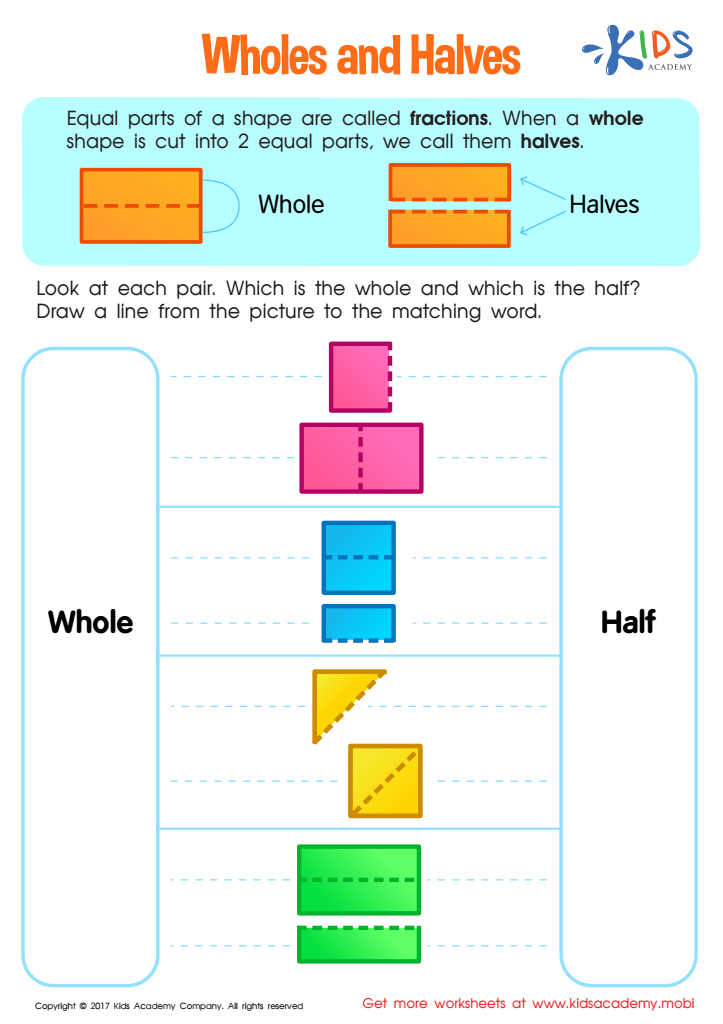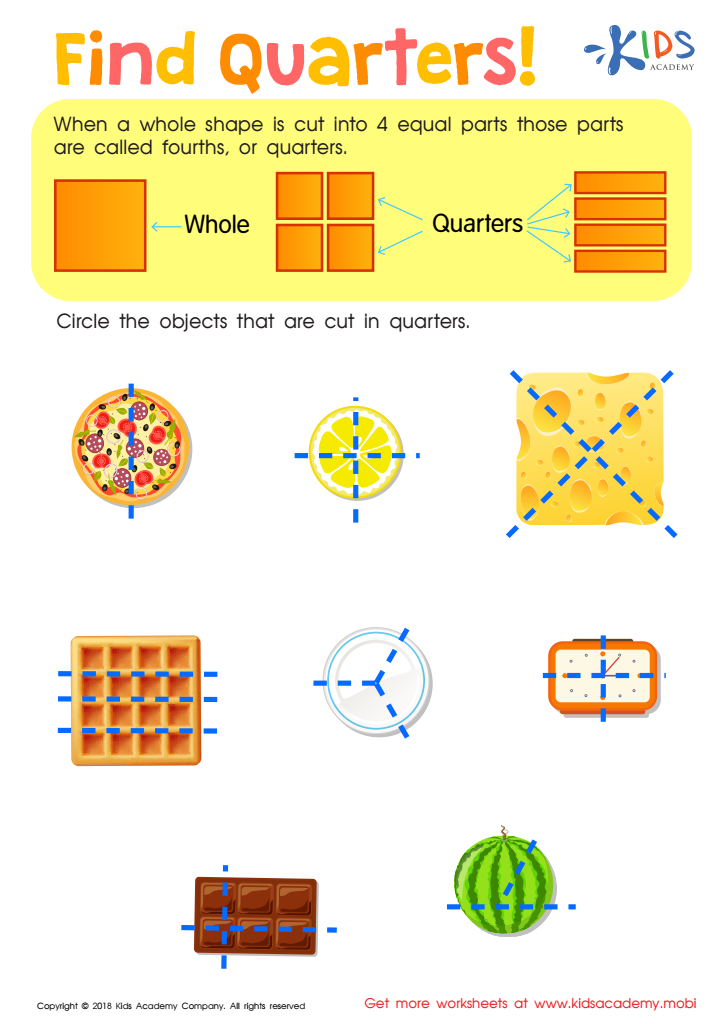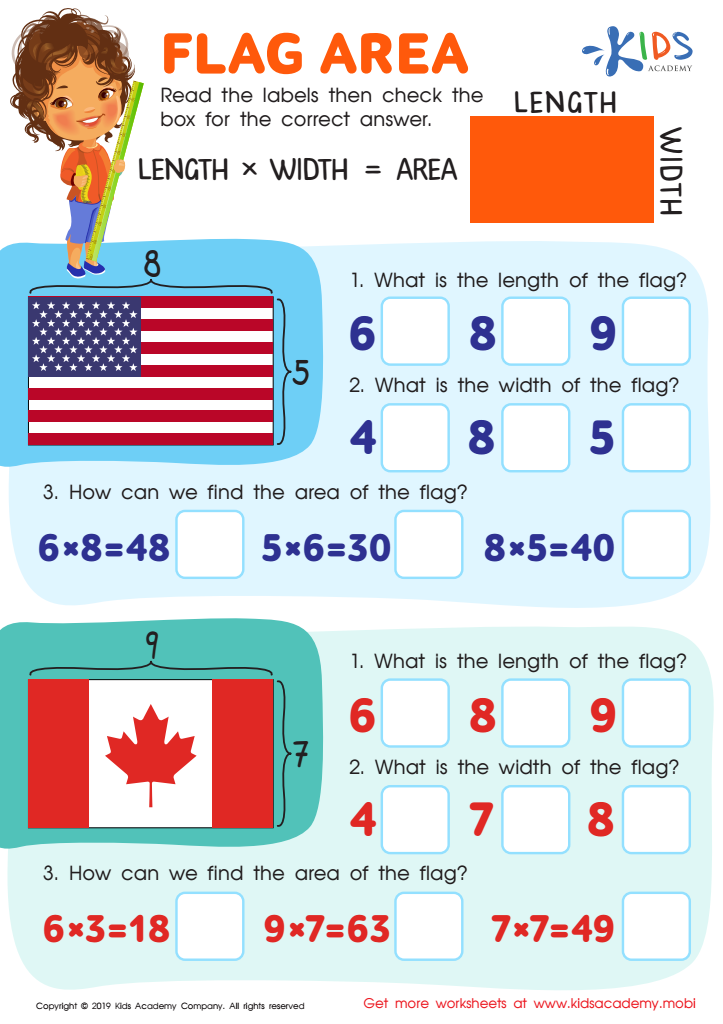Visual Learning Normal Geometry Worksheets for Ages 4-8
3 filtered results
-
From - To
Unlock the world of shapes and spatial understanding with our "Visual Learning Normal Geometry Worksheets for Ages 4-8". Designed to captivate young minds, these engaging, colorful printables make geometry fun and accessible. Each worksheet is thoughtfully crafted to develop critical early math skills such as identifying shapes, understanding symmetry, and recognizing patterns. Perfect for home or classroom use, these activities support visual learning styles, encouraging children to explore and grasp essential geometry concepts through hands-on practice. Help your child build a solid mathematical foundation while fostering creativity and confidence. Download today and watch your little learners thrive!


Wholes and Halves Worksheet


Find Quarters Worksheet


Flag Area Worksheet
Visual learning in normal geometry is crucial for young children aged 4-8 because it aligns with their natural cognitive development and learning preferences. At this age, children are concrete thinkers; they grasp concepts more easily through images and spatial understanding rather than abstract symbols. Visual learning helps to bridge the gap between tangible objects and abstract mathematical ideas.
When children are introduced to geometric concepts visually, using shapes, colors, and physical objects, they can create mental images that aid in comprehending and remembering information. This method leverages their developmental strengths, such as their keen observation skills and natural curiosity about the world around them.
Furthermore, visual learning supports a multitude of developmental benefits. It enhances spatial awareness, which is critical not just for geometry but for fields like science, technology, engineering, and mathematics (STEM) later on. Visual learning also improves fine motor skills as children interact with shapes and puzzles.
Additionally, a strong foundation in visual geometry fosters critical thinking and problem-solving skills. It requires children to analyze, compare, and contrast different shapes and patterns, which strengthens their analytical capabilities.
Ultimately, integrating visual learning into early geometry education makes learning more engaging and accessible, laying a solid foundation for more advanced mathematical concepts. For parents and teachers, fostering this early understanding is key to supporting children's long-term academic and cognitive growth.
 Assign to My Students
Assign to My Students































